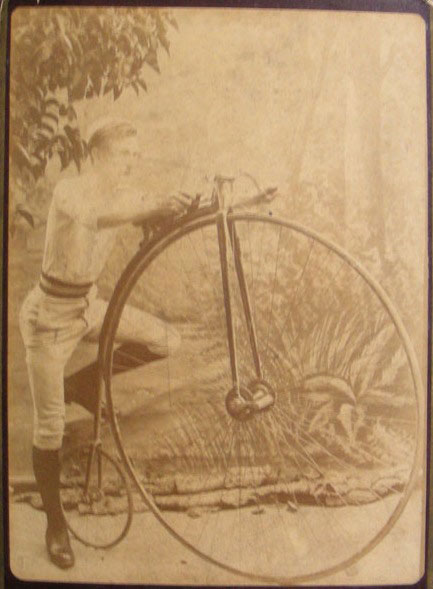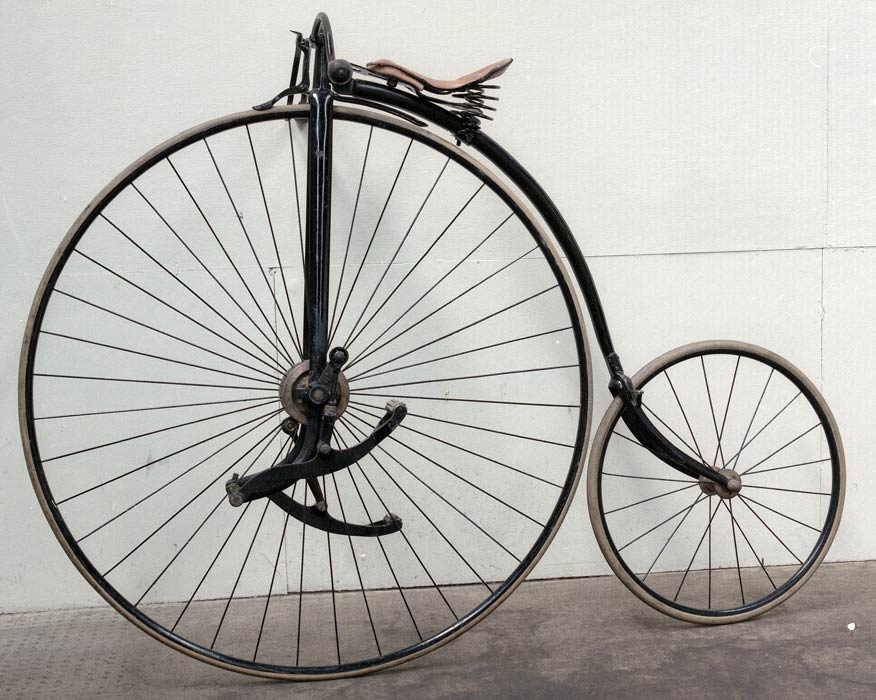An unusual award for an early cycling champion

For many years I have looked after the transport and industrial collections at National Museums Liverpool - otherwise known as the ‘large objects’ collection - but isn’t always the big and bold things that make an impact. In 2002 I went to West Kirby to meet a lovely man, aged 90, who wanted to donate an object to the museum that had once belonged to his uncle. Despite discussing this on the phone I didn’t realise quite how unusual or striking the object would turn out to be.
This fabulous bowl with its lobster claw feet and matching servers was produced by Wedgwood. It is pattern number C2457 and the design was first registered in 1886.
It was awarded to WW Smith as first prize in a 20 mile cycle road race in 1887. It took him 1 hour and 22 minutes to complete the race – on a penny farthing!
William Wilkinson Smith worked in Liverpool as a Mercantile Marine Chief Engineer and his descendants were very proud of his achievements in cycling. They had treasured the bowl and servers for many years, along with an authentication letter from Wedgwood and some photographs of William.

But can you imagine cycling 20 miles on a penny farthing? It must have been a very uncomfortable ride! During some research I came across these instructions for riding a penny farthing which appeared in 'The Modern Bicycle', 1877:
"The saddle being nearly as high as your shoulder is impossible to vault on; but a step is fitted on the backbone at a convenient height on the left. There are two ways of mounting. One is to start the machine and run by the left side, and put the toe upon the step while in motion, throwing the right leg over the seat; the other is to stand at the back of the machine with the left toe on the step and to hop with the right leg until you have gained sufficient impetus to raise yourself on the step and throw your right leg across the seat. The first is the best plan.
Having mounted the high machine, you will find that the reach of the leg, and the position altogether, is very different from the seat on the boneshaker: but when you get some command you will find the easy gliding motion much pleasanter, as well as much faster."
It all sounds very complicated and if you were a lady cyclist it was even more difficult because your long shirts could easily get caught in the spokes and mechanism.
A variation from the penny farthing, the facile bicycle has pedals which are operated by moving them up and down, and this motion drives the front wheel by a system of levers and cranks. The design was patented by John Beale and introduced in 1878.

This example of a facile is from our collection. It was supplied by a London agent in 1880 but used in and around Liverpool.
You may have seen the lobster claw bowl on display, along with a selection of locally made bicycles from our collection in the 2020 exhibition Liverpool on Wheels. If you missed it then you can still explore the virtual tour of the exhibition online.
